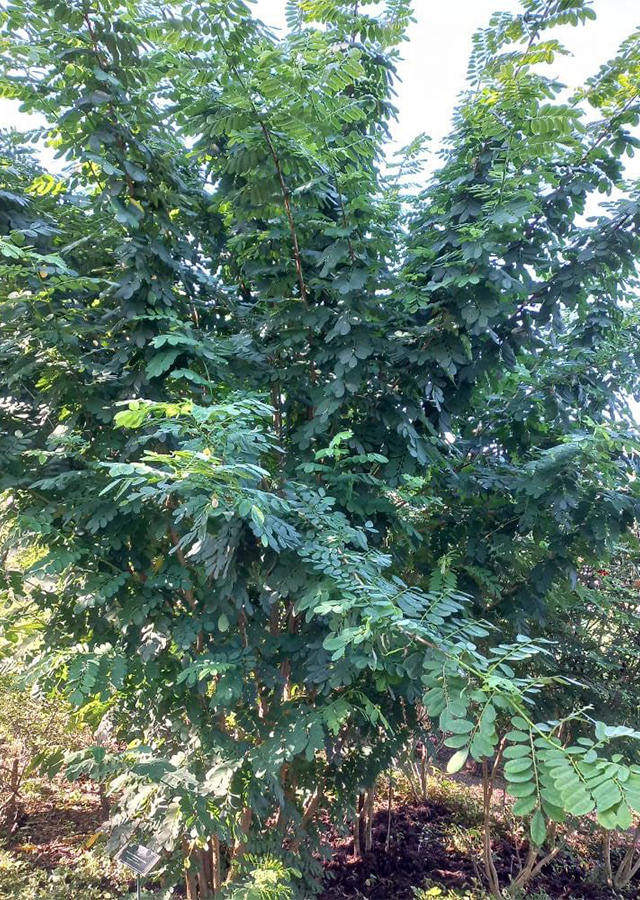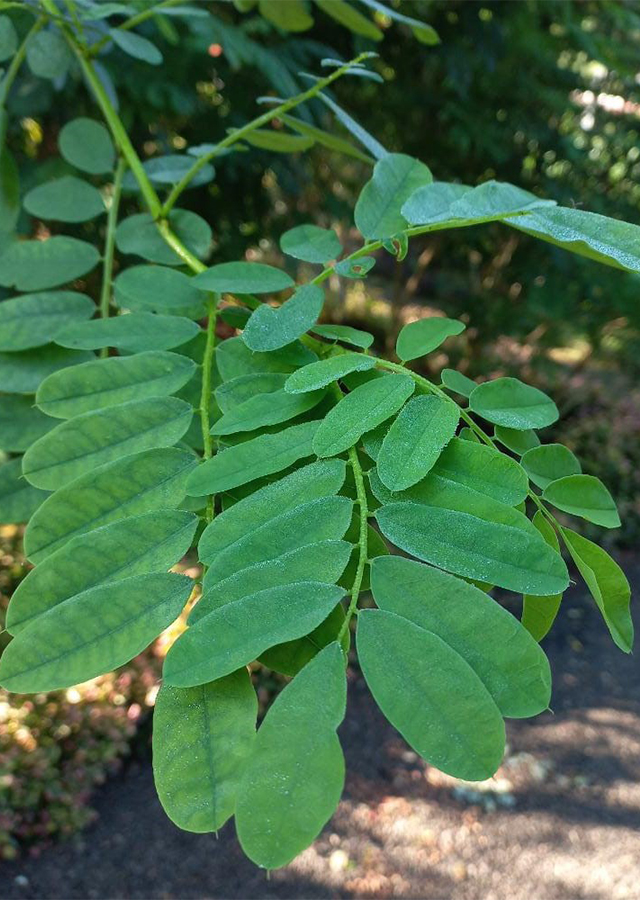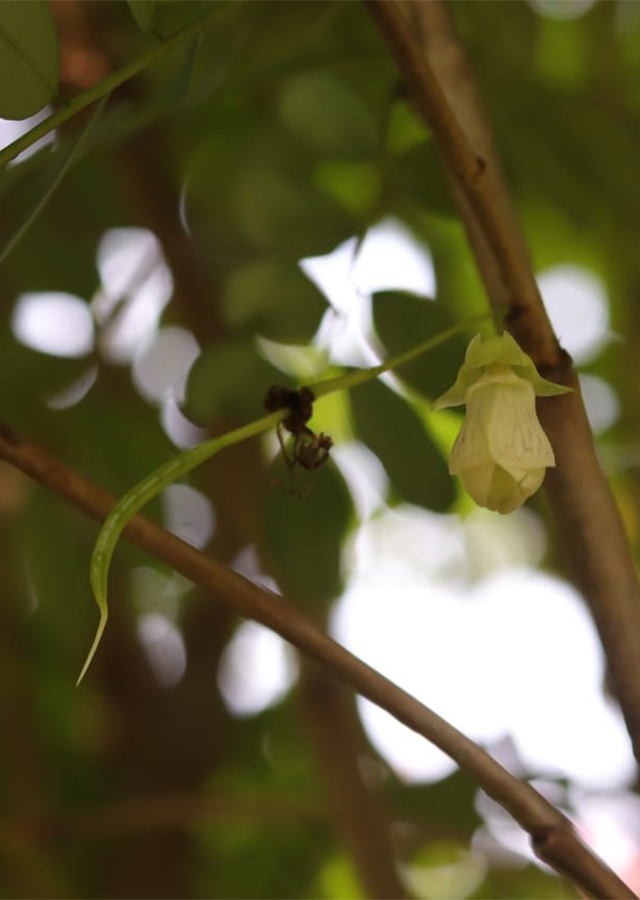Ormocarpum cochinchinense
Ormocarpum cochinchinense (Lour.) Merr.
Fabaceae
Location in our garden
Principal



Synonym
Dalbergia diphaca Pers.
Diphaca cochinchinensis Lour.
Ormocarpum glabrum Teijsm. & Binn.
Habitus
Shrubs. An erect, perennial subshrub, 2-7.5 m tall.
Part Used
Leaves
Bark
Roots
Growing Requirements
Full Sunshine
Drought Resistant
Habitat
Forest
Coastal
Roadside
Terrestrial
Overview
The native range of Ormocarpum cochinchinense is Tropical Asia (Indonesia, Thailand, Vietnam) to Nansei-shoto and South West Pacific. Intoduced into Caroline Island, China South-East, Hainan, Marianas, Queensland, and Taiwan. This herb has been used as source of medicine by human from ancient time to the present. Etimology of this species: Greek ormos, necklace, Greek karpos, fruit, referring to the segmented fruit that resembles a necklace. Latin cochinchinense, of or from Cochinchina (now known as southern Vietnam), referring to the natural distribution of this species.
Vernacular Names
Elumbotti, Kaattu Murungai (India), Lian jia mu (Chinese).
Agroecology
Grows in open coastal thickets, up 50 m in elevation. It is suitable for growing along roadsides, parks and in gardens. Prefers dry soils/drought, well-drained soils, and saline soils/salt spray.
Morphology
- Stem - Young stems are yellowish-brown in colour and hairless, becoming fissured at maturity.
- Leaves - Alternate, stalked, pinnate leaves have 9-20 leaflets, arranged on both sides of the rachis, with a single leaflet at the terminal end. Each leaflet is hairless, papery, about 1.2-5 cm long by 0.5-2 cm wide, elliptic, oblong to obovate.
- Flowers - Whitish flowers are 1-2.4 cm long, occasionally with red or purple lines on the petals, usually with 10-24 flowers arranged on a short axillary inflorescence.
- Fruits - Smooth linear pods, 5-20 cm long and 1.5-2.5 cm wide, 4-7 jointed.
- Pods - 2-3 cm long, 1-4 jointed; joints oblong with soft echinate process.
Cultivation
Generative propagation is by seeds.
Chemical Constituents
Flavonoids, alkaloids, steroids, terpenoids, saponins, gums, tannins, resins, coumarins, cardiac glycosides, betacyanin, phenols, phytosterols.
Traditional Medicinal Uses
- Traditionally used for curing bone fracture in the villages of Tamil Nadu, India.
- Studies had showed antioxidant properties of the leaves extraction.
Part Used
Reference Sources
- E-Floras.(No date). Flora of China: Ormocarpum cochinchinense. http://www.efloras.org/florataxon.aspx?flora_id=2&taxon_id=242334759. 24-10-2021.
- India Biodiversity. (No date). India Biodiversity Portal: Ormocarpum cochinchinense Auct. non (Lour.)Merr.. https://indiabiodiversity.org/species/show/263387#natural-history. 24-10-2021.
- Kew Royal Botanic Gardens. Plants of the World Online: Ormocarpum cochinchinense (Lour.) Merr. http://powo.science.kew.org/taxon/urn:lsid:ipni.org:names:510616-1. 24-10-2021.
- National Park of Singapore. (2021). Flora & Fauna Web: Ormocarpum cochinchinense (Lour.) Merr.. https://www.nparks.gov.sg/FloraFaunaWeb/Flora/5/6/5640. 24-10-2021.
- Thirumal, S., Duraikannu, G. (2013). In vitro Antioxidant and Chemical Constituents from the Leaves of Ormocarpum cochinchinense Elumbotti. American Journal of Plant Physiology 8(3): (114-122). pdf. DOI:10.3923/ajpp.2013.114.122.


